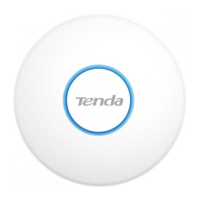Document version: V1.0
25
Parameter description
It indicates the personal or pre-shared key security mode, including WPA-PSK,
WPA2-PSK, Mixed WPA/WPA2-PSK, WPA3-SAE, and WPA2-PSK&WPA3-SAE.
⚫
WPA-PSK: It indicates that the wireless network corresponding to the selected SSID
is encrypted with WPA-PSK.
⚫
WPA2-PSK: It indicates that the wireless network corresponding to the selected
SSID is encrypted with WPA2-PSK.
⚫
WPA3-SAE: It indicates that the wireless network corresponding to the selected
SSID is encrypted with WPA3-SAE.
⚫
WPA2-PSK&WPA3-SAE: The wireless network adopts the mixed encryption mode
of WPA2-PSK/AES and WPA3-SAE/AES to ensure safety.
⚫
Mixed WPA/WPA2-PSK: It indicates that wireless clients can connect to the
wireless network corresponding to the selected SSID using either WPA-PSK or
WPA2-PSK.
WPA3-SAE is an upgraded version of WPA2-PSK. If your wireless clients do not support
WPA3-SAE or the WiFi experience is unsatisfying, you are recommended to set the
security mode to WPA/WPA2-PSK (recommended).
It specifies the encryption algorithm corresponding to the selected security mode.
⚫
AES: It indicates the Advanced Encryption Standard.
⚫
TKIP: It indicates the Temporal Key Integrity Protocol. If TKIP is used, the maximum
wireless throughput of the AP is limited to 54 Mbps.
⚫
TKIP&AES: It indicates that both TKIP and AES encryption algorithms are supported.
Wireless clients can connect to the wireless network corresponding to the selected
SSID using TKIP or AES.
It specifies a pre-shared WPA key, that is, the password clients use to connect to the
wireless network.
It specifies the automatic update interval of a WPA key for data encryption. A shorter
interval results in higher data security.
The value 0 indicates that a WPA key is not updated.
WPA and WPA2
To address the key management weakness of WPA-PSK and WPA2-PSK, the WiFi Alliance puts
forward WPA and WPA2, which use 802.1x to authenticate devices and generate data encryption–
oriented root keys. WPA and WPA2 use the root keys to replace the pre-shared keys that set
manually, but adopt the same encryption process as WPA-PSK and WPA2-PSK.
WPA and WPA2 uses 802.1x to authenticate devices and the login information of a device is
managed by the device. This effectively reduces the probability of information leakage. In addition,

